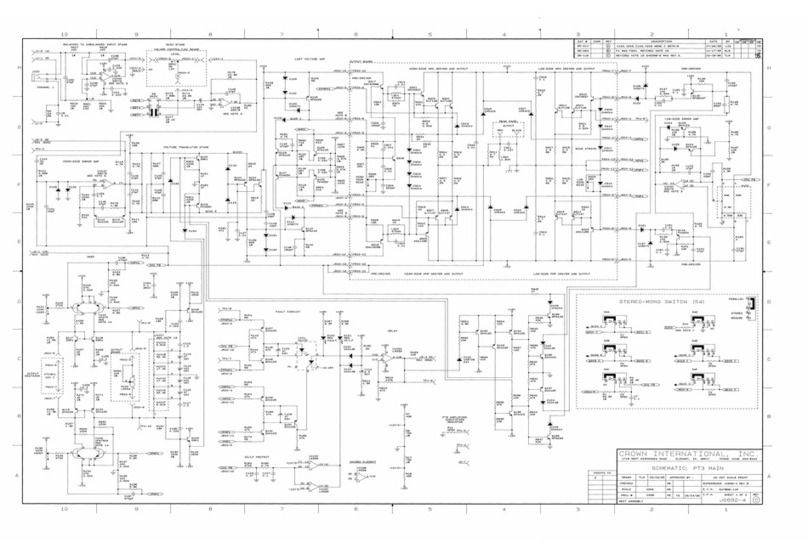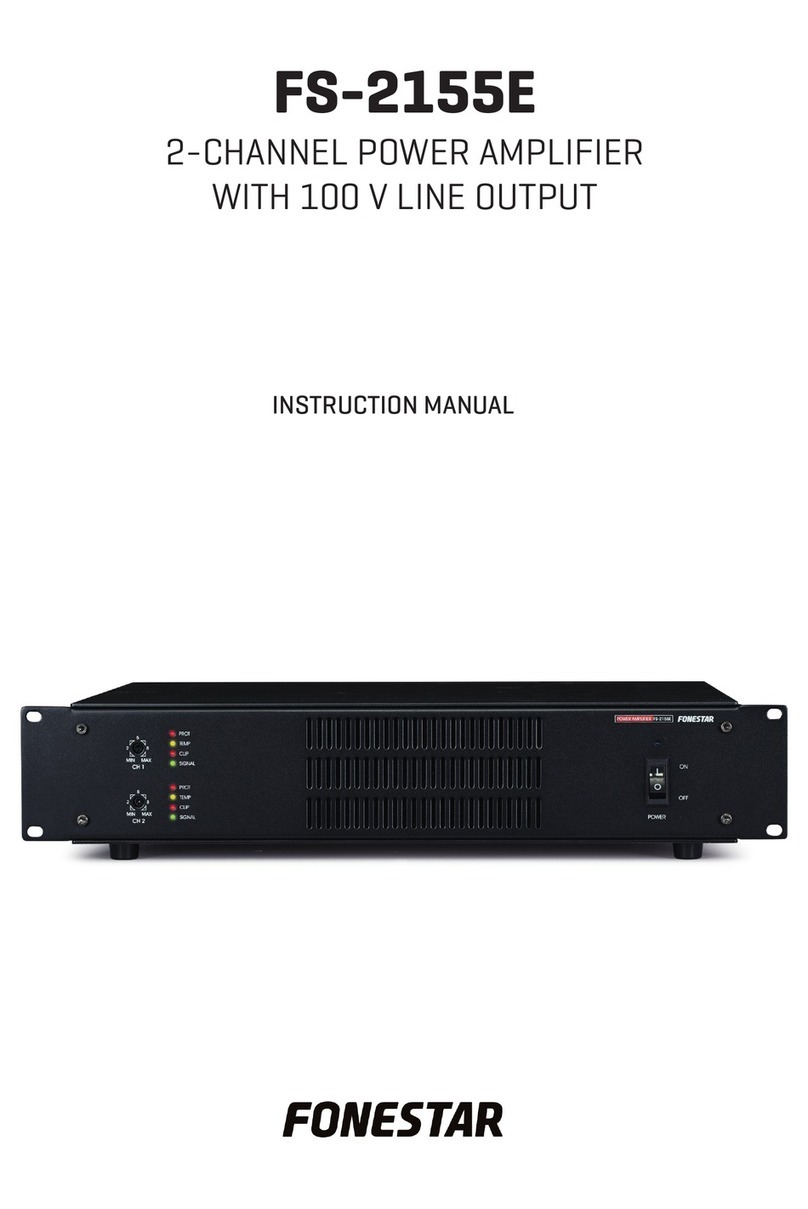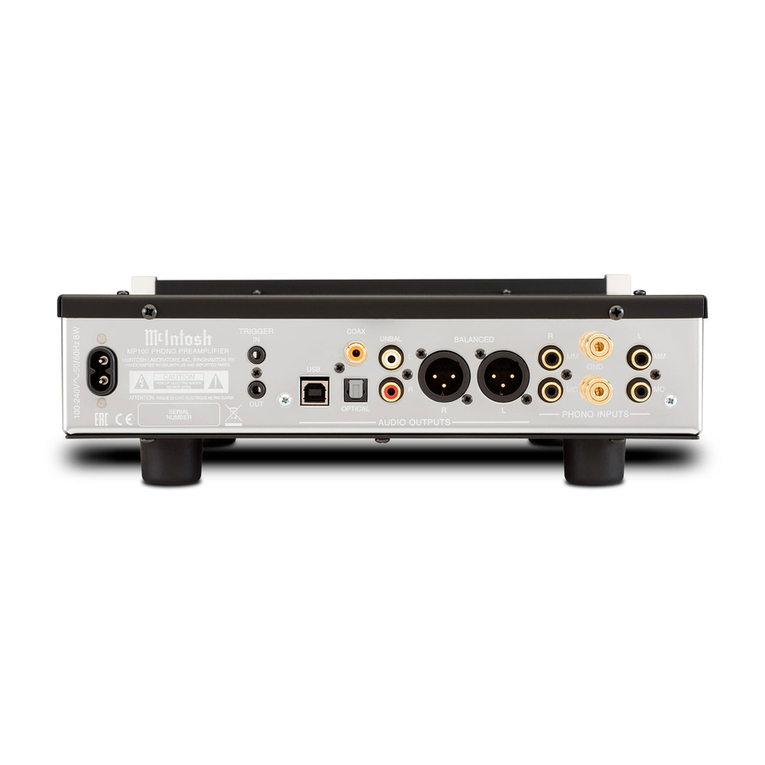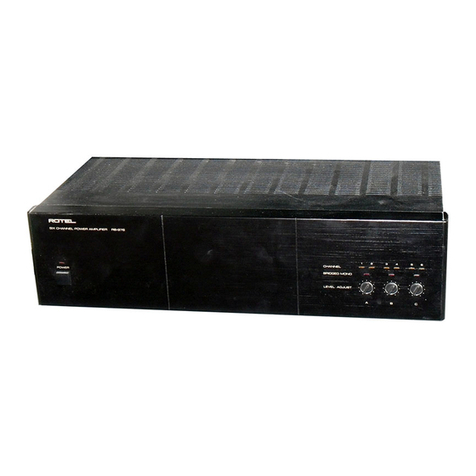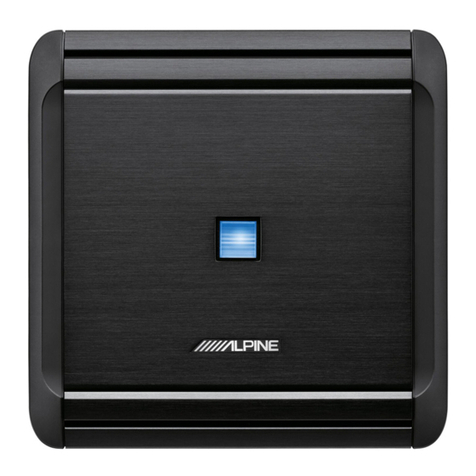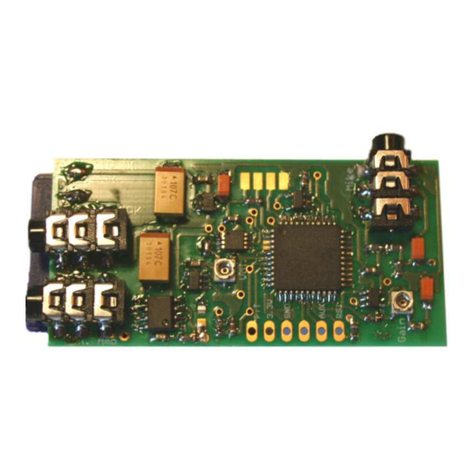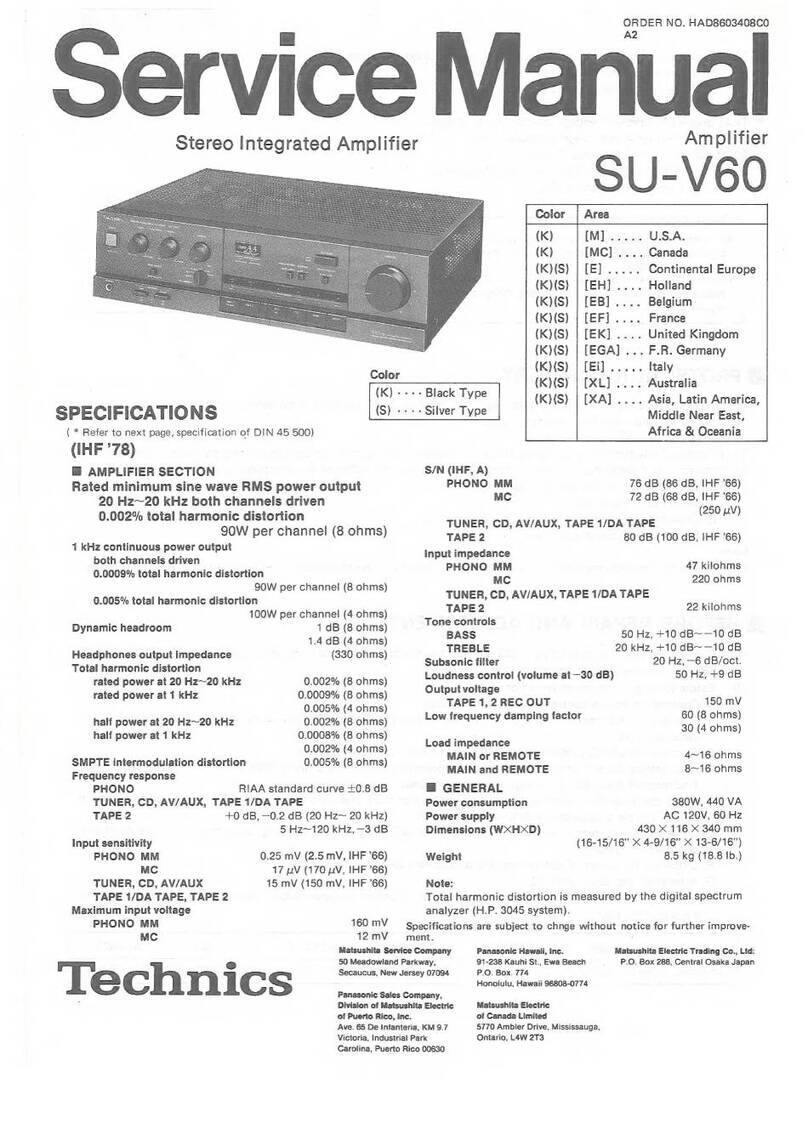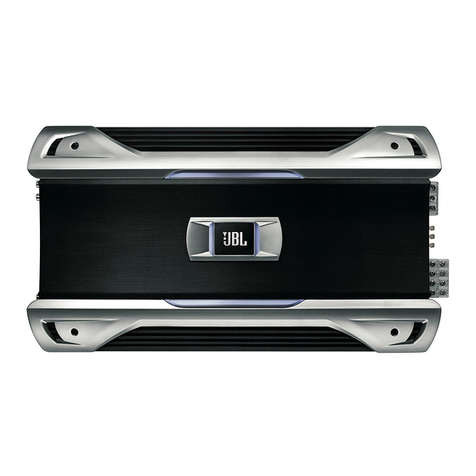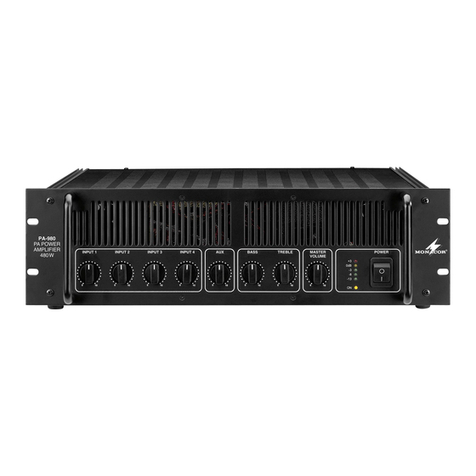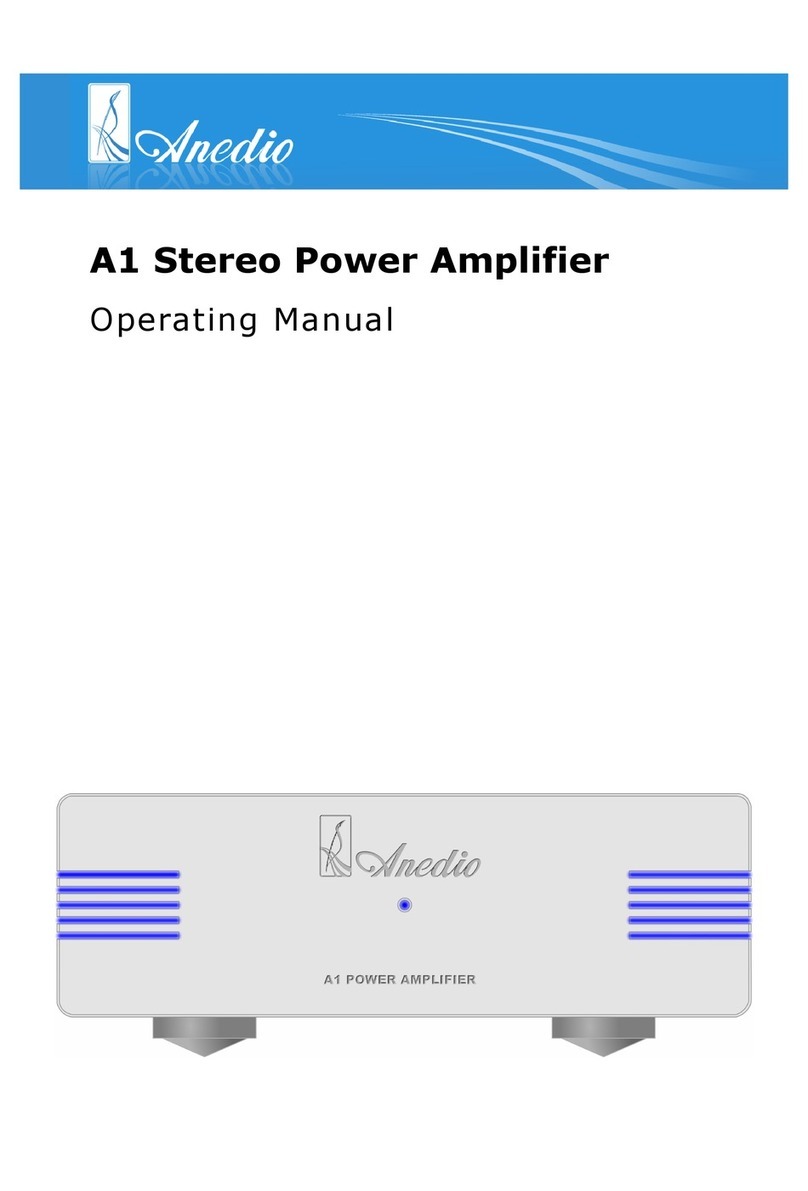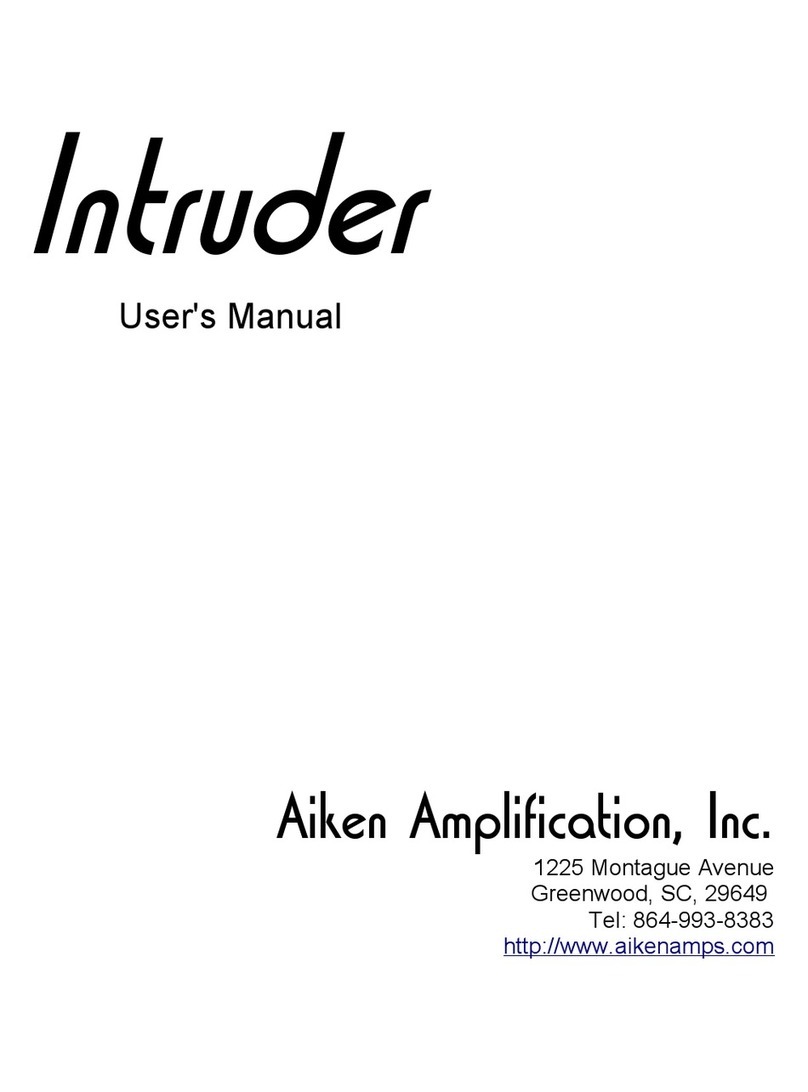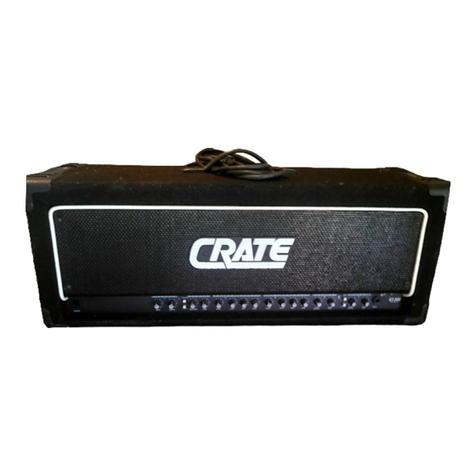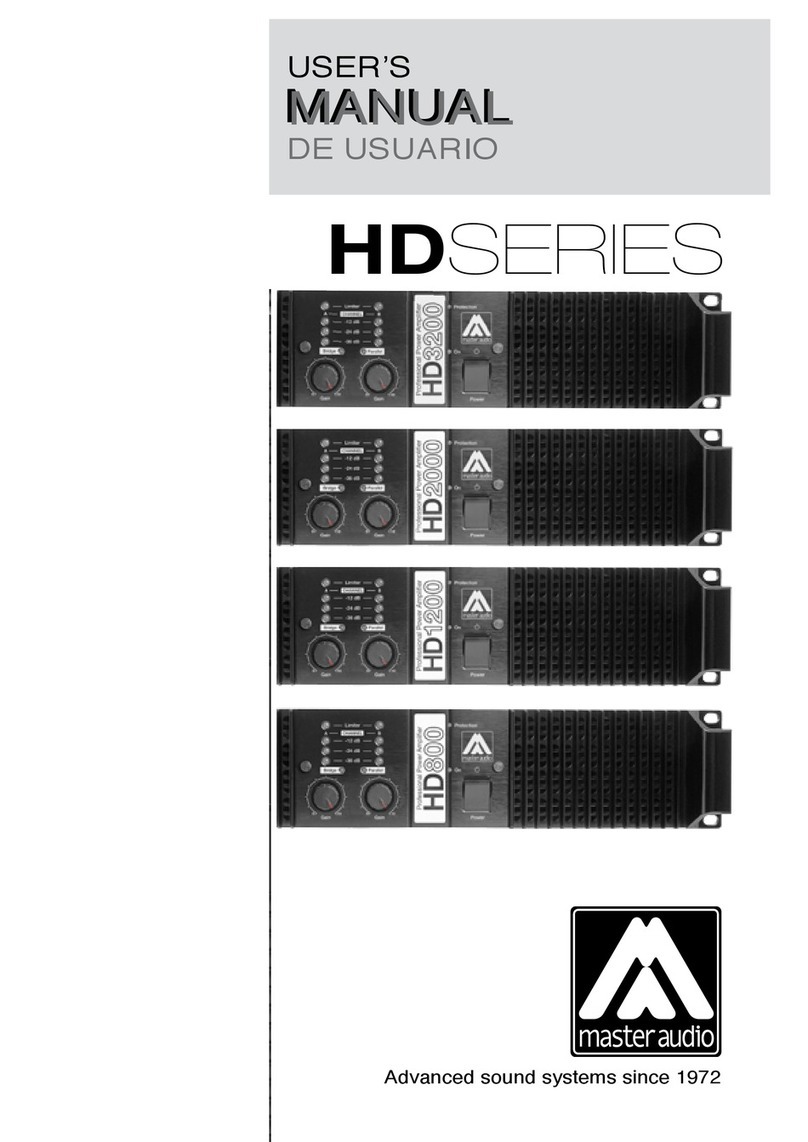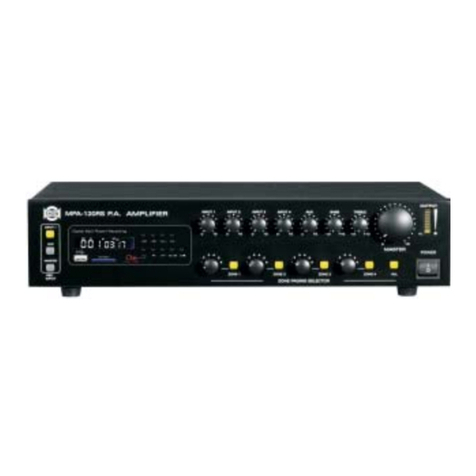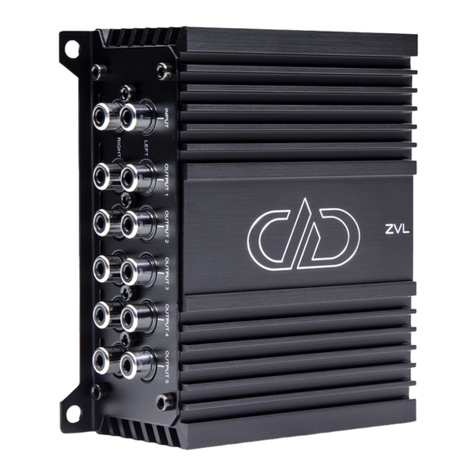Seventh Circle Audio A12 User manual

Page 1 of 9
Seventh Circle Audio
A12 Microphone Preamp
Based on classic American preamp designs of the late ‘60s and early ‘70s, the A12 delivers
the sound of rock. A simple, single stage, transformer-coupled preamp, the A12 produces an
aggressive midrange with pronounced transformer coloration. The A12 sounds fantastic with
rock drums and electric guitars,but is versatile enough to be used with just about any source.
Who Should Build This Kit?
The A12 is not difficult to build, but it is not intended for absolute beginners. You should have
built at least one project on a printed circuit board (PCB) before trying the A12. Sorry, but
soldering cables doesn’t count. If you’ve never built an electronic project of any kind, this is
probably not the one to start with. To guarantee success make sure you have:
•The ability to make basic voltage and resistance measurements using a digital
multimeter (DMM).
•At least a rudimentary understanding of Ohm’s Law and the relationship between
voltage, current, and resistance.
•Some experience soldering on printed circuit boards.
•The patience to follow instructions precisely and work carefully.
Essential Tools
Fine tipped 20-30 watt soldering iron w/ cleaning sponge (Hakko 936 or similar)
Eutectic (63/37) rosin core or “no clean” solder (.025” diameter is usually best)
Good-quality DMM
Small needle nose pliers
Small diagonal cutters
Wire stripper
Phillips screwdriver (#1)
Precision straight blade screwdriver (for adjusting potentiometers)
Highly Recommended Tools
Lead bender (Mouser 5166-801)
T-Handle wrench and 4-40 tap (Hanson 12001 and 8012)
MOLEX crimp tool (Waldom W-HT-1919 or equivalent)
Magnifying glass
Optional Tools
Panavise with circuit board head (PV-312, PV-300, and PV-315 or PV-366) 1/4"
nut driver
Oscilloscope
Signal generator

A12B Assembly Instructions
Page 2 of 9
Work Area
Find a clean, flat, stable, well-lit surface on which to work. An anti-static mat is recommended
for this project. If you’re in a dry, static-prone environment, it’s highly recommended. The
importance of good lighting can’t be overstated. Component markings are tiny, and you’ll be
deciphering a lot of them.
Soldering Technique
Make sure your iron's tip is tinned properly, and keep it clean! The trick to making perfect
solder joints is to heat the joint quickly and thoroughly before applying the solder, and a
properly tinned and clean tip is essential for this. Apply enough solder to form a "fillet"
between the lead and the pad, a little mound of solder that smoothly transitions from the plane
of the board up to the lead, but don’t use too much. The finished joint should be smooth and
shiny, not rough or gritty looking.
If you've never soldered a board with plated-through holes, you might be surprised to discover
how difficult it can be to remove a component once you've soldered it in place. If you're using
solder wick to correct a mistake, be very careful not to overheat the pads, since they will
eventually delaminate and "lift". It's often better to sacrifice the component and remove its
leads individually, and start over with a new part. If for some reason you need to unsolder a
multipin component (like a rotary switch or integrated circuit), remove as much solder as you
can with solder wick or a solder sucker, and then use a small heat gun to heat all the leads
simultaneously. With care, you can remove the component without damaging the board.
Instruction Conventions
Text in orange indicates a step where extra care needs to be taken. Doing it wrong isn’t a
disaster, but it’ll need to be corrected.
Text in red indicates a step that must be done correctly. Doing it wrong will guarantee
improper operation, and probably damage components and/or the circuit board.
Assembly
1. Before you begin, carefully unpack the kit and examine the parts. Check the contents of
each small bag against the BOM to make sure all the parts have been included. If you
think something’s missing, please e-mail the details to [email protected]om and
we’ll ship replacement parts ASAP.
2. Generally, the idea when "stuffing" or “populating” a circuit board by hand is to start with
the lowest profile parts, such as the resistors, and work your way up to the taller
components. In each step below, insert the components, flip the board onto your work
surface component-side down, and carefully solder and trim the leads. Use a piece of stiff
cardboard to hold the parts in place while you flip the board. First, orient the board as
shown.

A12B Assembly Instructions
Page 3 of 9
3. Before installing the resistors, prepare the
leads using small needle nose pliers or a lead-
forming tool as shown below. Whatever you
do, don’t bend the leads at the resistor
body and force them into the board. This
not only results in an ugly job; it can damage
the parts. The resistors should be uniformly
level and flush with the board.
4. Install the 1/4-watt resistors. Check the Bill of Materials (BOM) for help in reading the
resistor color bands. It's also a good idea to actually measure each resistor with your
DMM as you place it on the board, just in case you've read it wrong. Don't rely on the
photos for component placement. If the resistor value silk-screened on the board doesn't
agree with the value on the schematic or parts list, follow the schematic
5. Next, add the protection diodes D7 –D14. Diodes are polarized and must be installed
the right way around! Add the glass diodes D1-D6. The colored band on the diode
matches the white band on the silkscreen.

A12B Assembly Instructions
Page 4 of 9
6. Add the small yellow ceramic capacitors. These capacitors are not polarized and can be
installed in either direction but pay close attention to the capacitor markings! These
parts all look alike, but they are not interchangeable. Putting one in the wrong spot will
not prevent the preamp from passing signal, but it can seriously impair its performance.
Add the blue, 3-pin filters.
7. Add the 0.1" headers. You may find it easier to handle the headers if you attach the
shorting jumpers before soldering. Install the headers with the long pins up! The
function of the headers is as follows:
J2 connects a 604-ohm load resistor across the output. Unless you’ll be connecting the
A12 to a piece of older gear with 600 ohm input impedance, connect a shorting jumper
across J5
J3 - A separate, isolated output signal is available at this header. The amplitude at J6 is
half the amplitude at CONN2.
8. Install 14 transistors. Be sure to orient
the transistors correctly! These parts
are not the same and are not
interchangeable. Align the flat side of the
transistor with the flat side of the
silkscreen outline. The two larger
trainsistors will be bent to lay down on the
board after inserted. Use screw and nut to
fasten to PCB, THEN solder the pins,

A12B Assembly Instructions
Page 5 of 9
9. Add dark blue aluminum electrolytic capacitors. Aluminum electrolytic capacitors are
polarized and must be installed the right way around! Be absolutely sure to observe
the correct polarity when installing this part. The negative lead of the capacitor is marked
with a colored stripe. The positive pad on the circuit board is marked with a small "+"
sign. DO NOT install C16 and C17 yet!
10. Carefully mount the toggle switches. Be sure they're seated flat on the board before
soldering all of the pins. You may find it easier to solder the first pin with the board
component side up.
11. Add J7, the MOLEX power connector. Be sure to orient it as shown, with the locking tab
away from the edge of the board.

A12B Assembly Instructions
Page 6 of 9
12. Install C16 and C17, the phantom power filter caps. Aluminum electrolytic capacitors
are polarized and must be installed the right way around! Again, be absolutely sure
to observe the correct polarity when installing these parts. The negative leads of the
electrolytic caps are marked with a colored stripe. The positive pads on the circuit board
are marked with a small "+" sign.
13. Attach gain trim control R24. Make sure the control is seated flat to the board
before soldering the leads. You may want to add a small dab of silicone adhesive to the
bottom of the control to hold it more securely.
14. Make sure the rotary switch is
fully seated and solder it to the
board. Try to make your solder
joints as neat as possible, and
don’t use too much solder.

A12B Assembly Instructions
Page 7 of 9
15. Add CONN1 and CONN2 to the board. Make sure they’re fully seated before soldering.
The BLACK screws are for the XLR’s ONLY!
16. Attach the input transformer T1. Pin 1 on the transformer is clearly indicated with a red
dot. The Cinemag Logo faces AWAY from PBC center. (See arrow)

A12B Assembly Instructions
Page 8 of 9
Skip mounting the transformer if installing into a PC01 One Shot, but do attach the wires!
26. Solder the transformer leads to the
circuit board as shown. The wire color
is silk-screened next to each pad. The
leads should not cross over and should
be trimmed to the length shown. Do
not leave the leads un-trimmed. GRAY,
BLUE,YELLOW,RED,VIOLET,GREEN,
ORANGE,BROWN.
27. Using the hardware supplied, attach
heat sinks to U1 and U2 and solder
them in place. Make sure to install the regulators correctly! These parts are not the
same and are not interchangeable. Align the regulator tab with the double line on the
silkscreen outline. Don’t swap the positive and negative regulators or mount them
backwards!
25
.
Using two #4-40 x 1" screws, attach
the output transformer to the board.
Place a 1/8" spacer on each screw
between the transformer and the circuit
board. Secure each screw with a #4
keps nut. Trim the leads to length,
then strip and tin them with solder as
shown. Tinning the leads makes them
easier to manage in the next step.

A12B Assembly Instructions
Page 9 of 9
28. Install the bulk filter capacitors C16 and C17. Push
them in firmly until they are fully seated against the board.
Again, electrolytic capacitors are polarized and must be
installed the right way around! Be absolutely sure to
observe the correct polarity when installing these parts.
29. That's it! Before going on to initial power-up, carefully check your work. Make sure you
haven't created any solder bridges between pads, or between a pad and the ground
plane.
Initial Power-Up and Testing.
30. Again, carefully check your work. Make sure you've got the right resistors in the right
locations. Make absolutely sure you've got all the diodes and electrolytic capacitors
soldered in the right way around! Double check to make sure you haven’t inadvertently
swapped the voltage regulators or trim pots. Check for poor solder joints and solder
bridges, and make sure you fix any problems before continuing.
31. Just to make sure you haven't created any blatant shorts, measure the resistance
between pins 1 and 2 of J1. Do the same for pins 3 and 2. You should measure a very
high resistance. If you measure a steady resistance under 100 ohms, don't apply power.
Carefully check your work until you find that short.
32. Connect the P/S to J7. Simply wire the power supply connectors together in a 1:1 fashion.
That is, P/S J2, pin 1 to A12 J7, pin 1, pin 2 to pin 2, etc. Pin 1 is toward the front, pin 6
toward the rear. Set your DMM to measure DC voltages of 20V or greater and turn on the
power. Connect the negative meter probe to J1, pin 2, and measure the voltage at Q12,
pin 2. You should see about +24V.
33. Keep the negative probe at J1, pin 2, and measure the voltage at Q13, pin 2. You should
see about -24V. If these voltages are way off, by more than 1 volt, you have problems.
Possible things to check are incorrectly installed diodes, backwards caps or shorts.
34. Set transformer jumpers like this:
35. Congratulations! You've built a A12B preamp!
Add a jumper to J2 if you need
600 ohm output impedance.
Other Seventh Circle Audio Amplifier manuals
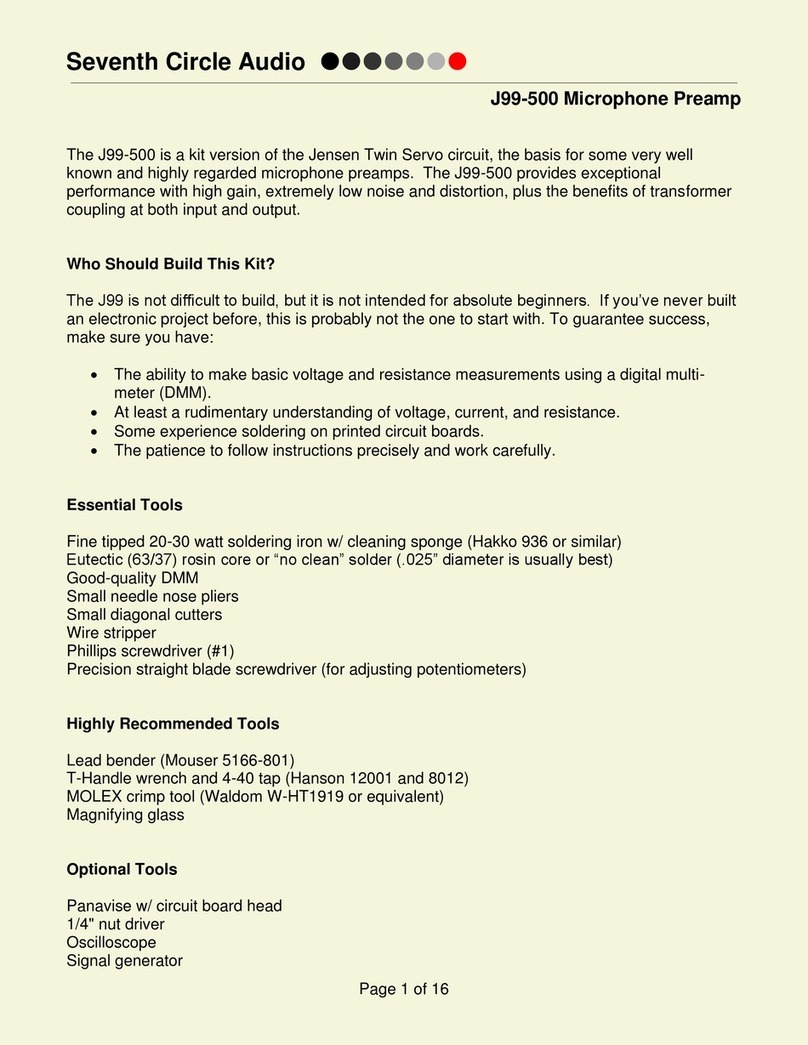
Seventh Circle Audio
Seventh Circle Audio J99-500 User manual
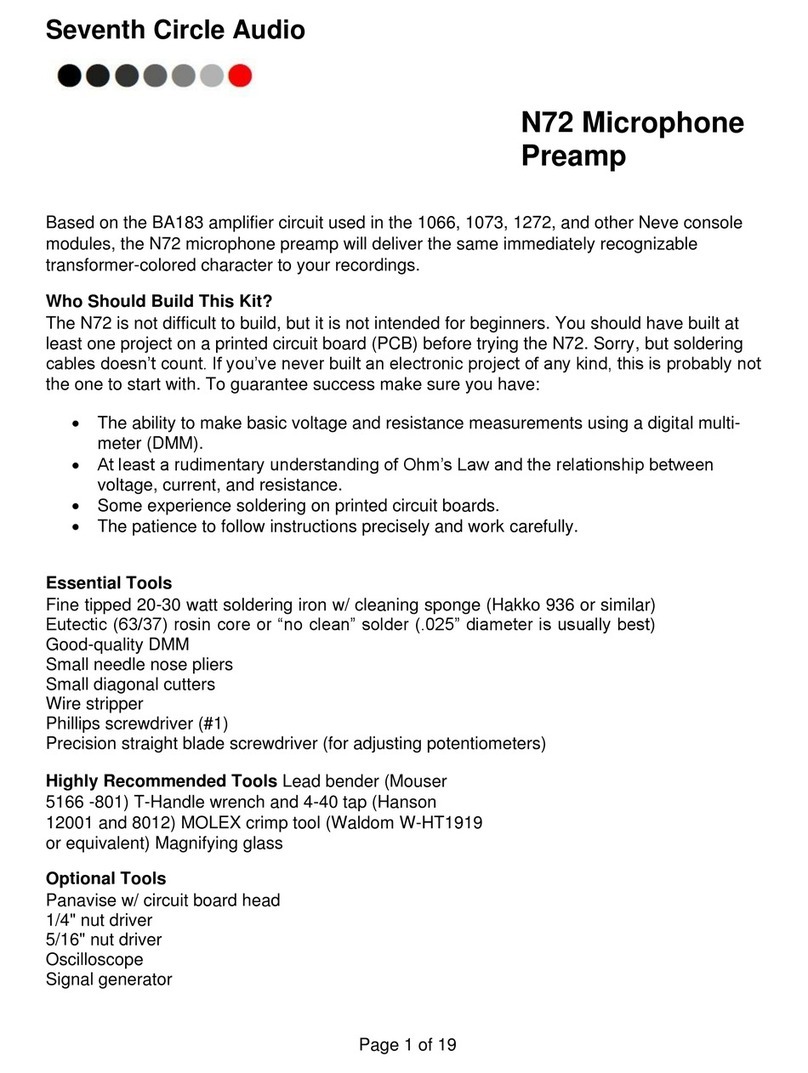
Seventh Circle Audio
Seventh Circle Audio N72 User manual
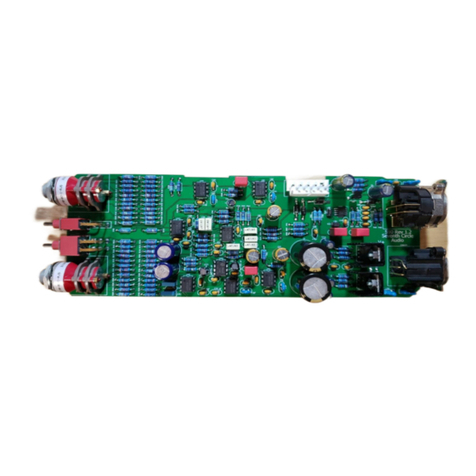
Seventh Circle Audio
Seventh Circle Audio S90 User manual
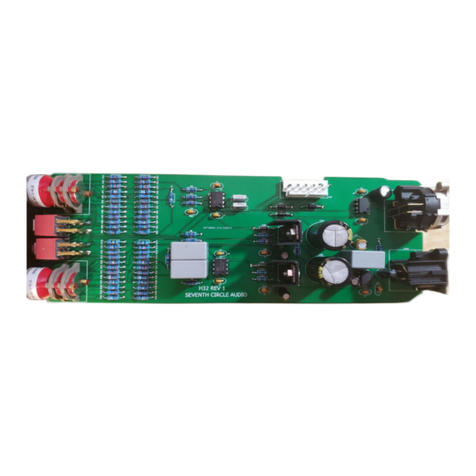
Seventh Circle Audio
Seventh Circle Audio H32 User manual
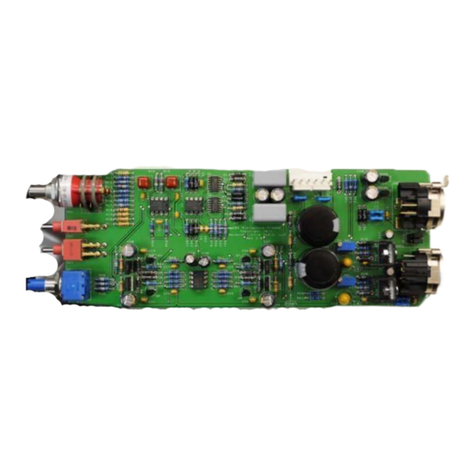
Seventh Circle Audio
Seventh Circle Audio C84 User manual
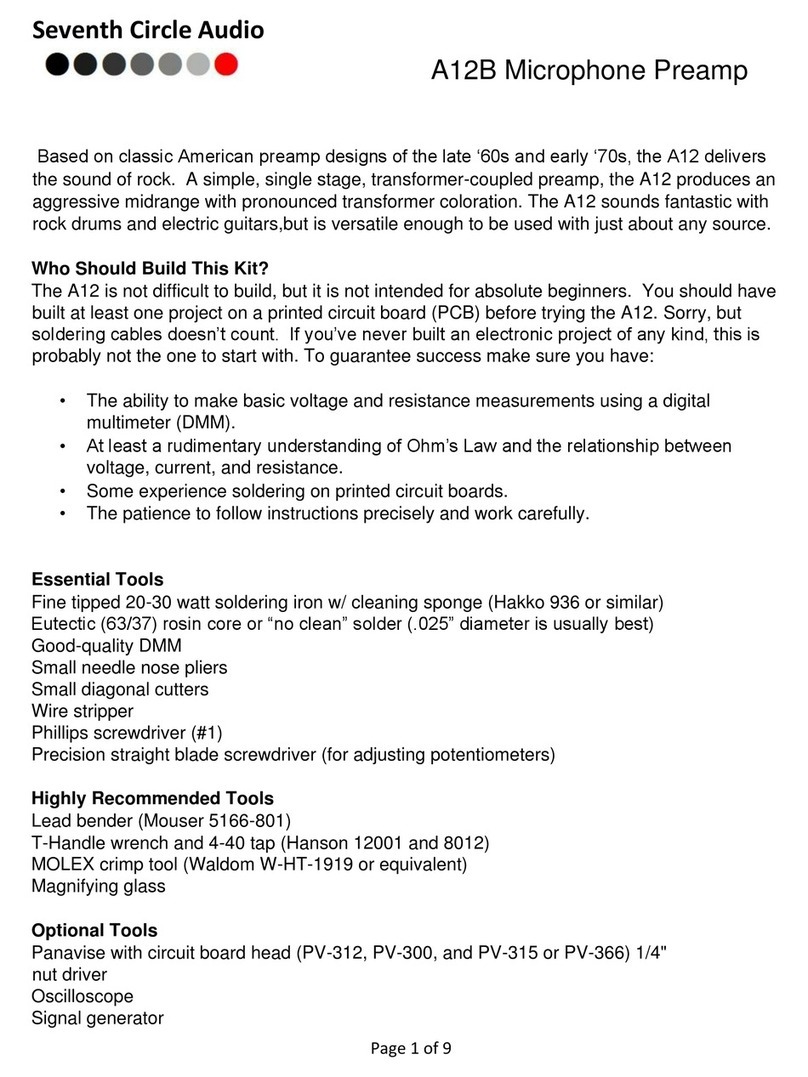
Seventh Circle Audio
Seventh Circle Audio A12B User manual
